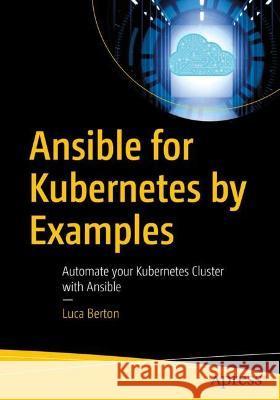Ansible for Kubernetes by Example: Automate Your Kubernetes Cluster with Ansible » książka
topmenu
Ansible for Kubernetes by Example: Automate Your Kubernetes Cluster with Ansible
ISBN-13: 9781484292846 / Angielski / Miękka / 2023 / 300 str.
Intermediate-Advanced
Learn how to automate your Kubernetes infrastructure using Ansible. This book will enable you to automate more tasks and save time with this human-readable platform.Containerized microservices deployed via Kubernetes allows you to save time, reduce human interaction and errors, and create applications that are more robust. You’ll learn how to automate the most redundant activities such as reports, services, the launch of a pod, adding permanent storage, configuring load balancing, and adding or modifying any Kubernetes parameter. You'll also gain an understanding of end-to-end use cases and how advanced cluster automation, such as Helm packages and node states, are evolving.Each lesson utilizes a specific use-case for the modern Kubernetes cluster and focuses on a single module from the most crucial parameter, complete with code demonstrations. Each code example is battle-proven in real-life with console interaction and verification.
What You'll Learn
- Automate Kubernetes cluster management, cloud services, pods, and storage with Ansible
- Configure your Ansible controller node
- Write and execute Ansible Playbook code that follows best practices
- Augment your productivity by applying Infrastructure as Code (IaC)
- Troubleshoot Ansible











